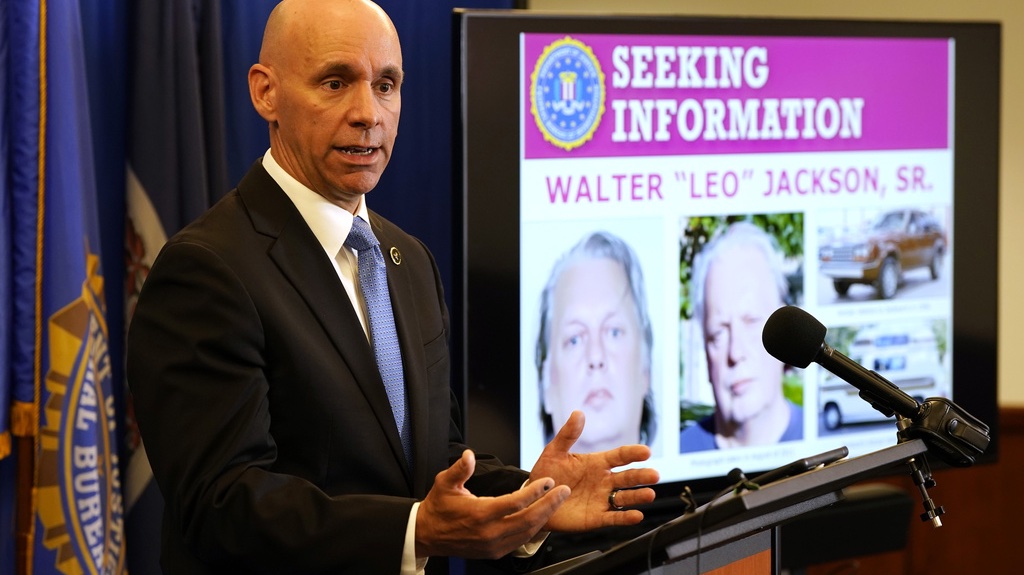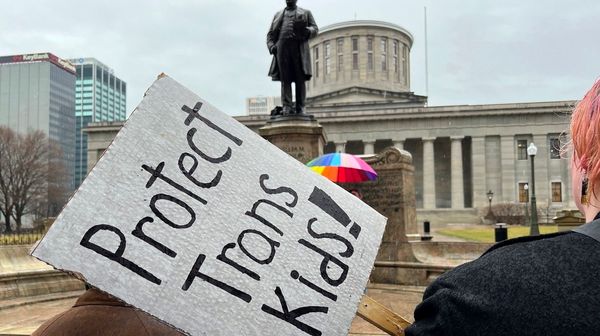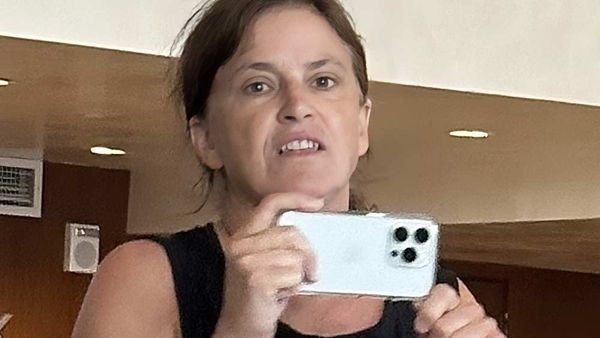
May 30
'Star Trek' Actor George Takei is Determined to Keep Telling his Japanese American Story
Yuri Kageyama READ TIME: 4 MIN.
The incarceration of 120,000 Japanese Americans, including children, labeled enemies during World War II is an historical experience that has traumatized, and galvanized, the Japanese American community over the decades.
For George Takei, who portrayed Hikaru Sulu aboard the USS Enterprise in the "Star Trek" franchise, it's a story he is determined to keep telling every opportunity he has.
"I consider it my mission in life to educate Americans on this chapter of American history," he said in a recent interview with The Associated Press.
He fears the lesson about the failure of U.S. democracy hasn't really been learned, even today, including among Japanese Americans.
"The shame of internment is the government's. They're the ones that did something unjust, cruel and inhuman. But so often the victims of the government actions take on the shame themselves," he said.
Takei, 87, has a new picture book out for children ages 6 to 9 and their parents, called "My Lost Freedom." It's illustrated in soft watercolors by Michelle Lee.
Takei was 4 years old when President Franklin D. Roosevelt signed Executive Order 9066 on Feb. 19, 1942, two months after the Japanese bombing of Pearl Harbor, declaring anyone of Japanese descent an enemy of the United States and forcibly removing them from their West Coast homes.
Takei spent the next three years behind barbed wires, guarded by soldiers with guns, in three camps: the Santa Anita racetrack, which stunk of manure; Camp Rohwer in a marshland; and, from 1943, Tule Lake, a high-security segregation center for the "disloyal."
"We were seen as different from other Americans. This was unfair. We were Americans, who had nothing to do with Pearl Harbor. Yet we were imprisoned behind barbed wires," Takei writes in the book.
Throughout it all, his parents are portrayed as enduring the hardships with a quiet dignity. His mother sewed clothes for the children. They made chairs out of scrap lumber. They played baseball. They danced to Benny Goodman. For Christmas, they got a Santa who looked Japanese.
Takei's is a remarkable story of resilience and a pursuit of justice, repeated throughout the Japanese American experience.
It's a story that's been told and retold, in books like the 1973 "Farewell to Manzanar" by Jeanne Wakatsuki Houston; "Only What We Could Carry," edited by Lawson Fusao Inada more than 20 years ago; and "The Literature of Japanese American Incarceration," which just came out, compiled by Frank Abe and Floyd Cheung.
David Inoue, executive director of the Japanese American Citizens League, headquartered in Washington, D.C., believes the message of Takei's book remains relevant.
He said discrimination persists today, as seen in the anti-Asian attacks that flared with the COVID-19 pandemic. Inoue said his son has been taunted in school in the same way he was growing up.
"One of the important things about having books like this is that it humanizes us. It tells stories about us that show we're just like any other family. We like to play baseball. We have pets," Inoue said.
Takei and his family were sent to Tule Lake in northern California because his parents answered "No" to key questions in a so-called loyalty questionnaire.
Question No. 27 asked if they were willing to serve in the U.S. armed forces. Question No. 28 asked whether they swore allegiance to the U.S. and would forswear allegiance to the Japanese emperor. Both were controversial questions for people who had been stripped of their basic civil rights and labeled enemies.
"Daddy and Mama both thought that the two questions were stupid," Takei writes in "My Lost Freedom."
"The only honest answers were No and No."
Takei said the questions did not explain what would become of families with young children. The second question was also a no-win, he said, because his parents felt there was no loyalty to Japan to denounce.
Tule Lake was the largest of the 10 camps, holding 18,000 people.
Young men who answered "Yes" became part of the all-Japanese American 442nd Regimental Combat Team, which fought in Europe while their families remained incarcerated. The 442, with their famous "Go for Broke" motto, is the most decorated unit of its size and length of service in U.S. military history.
"They were determined to prove themselves and get their families out of barbed wires," Takei said. "They are our heroes. I know I owe so much to them."
After Japan surrendered, Takei and his family, like all Japanese Americans freed from the camps, were each given $25 and a one-way ticket to anywhere in the U.S. Takei's family chose to start all over again in Los Angeles.
In 1988, the Civil Liberties Act – after years of effort and testimonies by Japanese Americans, including Takei – granted redress of $20,000 and a formal presidential apology to every surviving U.S. citizen or legal resident immigrant of Japanese ancestry incarcerated during World War II.
Takei's voice became choked when he recalled how his father did not live to see it.
He noted with pride the diversity depicted in "Star Trek," a TV series that started in the mid-1960s and developed a devout following. There, the crew that flew together through the galaxies was of various backgrounds.
"Star Trek" writer, creator and producer Gene Roddenberry wanted to portray the turbulent times and the civil rights movement on a TV show but had to do it metaphorically to make it acceptable, Takei said.
"Different people, different ideas, different taste, different food. He wanted to make that statement. Each of the characters was supposed to represent a part of this planet," Takei said.
Takei recalled how his father taught him how the government "of the people, by the people and for the people," as Abraham Lincoln put it in his Gettysburg Address, could also prove a weakness.
"All people are fallible, even a great president like Roosevelt. He got stampeded by the hysteria of the time, the racism of the time. And he signed Executive Order 9066," Takei said.






